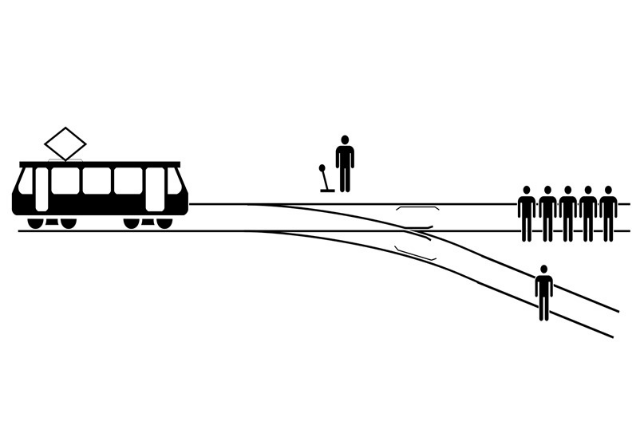
People unfamiliar with moral philosophy may find it boring at first. Once you start learning it in detail, however, you will truly start hating it. Yes, you read that right; you will despise it. Socrates and Aristotle were truly bored with life and made it their mission to write anything that came to mind. Since all these philosophers used the ancient Thesaurus for big, complicated words, people believed that their stuff is quite smart.
Jokes aside, moral philosophy is, despite seemingly unnecessary complications, a genuinely intriguing branch of study. Let’s dive into one of its most common yet alluring thought experiments: The Trolley Problem. Following is a paraphrased description of the same, originally introduced by Philippa Foot:
“A trolley barreling down the railway tracks is headed towards five people who are unable to move. You are standing next to a lever that, if pulled, will switch the trolley to a different set of tracks. However, an individual is standing on the side track as well.”
You only have two options:
| Do nothing, in which case the trolley will kill the five people on the main track. | Pull the lever, diverting the trolley onto the side track where it will kill one person. |
Many of you might be familiar with the aforementioned thought experiment (maybe from NBC’s “The Good Place”) and might have thus deemed it mundane. However, there are several layers to this problem. Answer the following while keeping in mind the decision you made above and how it’s different or similar to the succeeding scenarios:
“You’re a judge responsible for handling the murder of an individual from community ‘A’. The other members of this community blame members of community ‘B’ and demand the imposition of the death penalty on the criminal. Otherwise, community ‘A’ threatens to wreak havoc and kill five members of community ‘B’. Their power makes this threat dangerously serious. Unable to find the criminal, you are advised to frame an innocent member of community ‘B’ to save the five that community ‘A’ threatens to kill.”
You only have two options:
| Do nothing, in which case community ‘A’ will kill five people from community ‘B’. | Frame an individual from community ‘B’, saving five people while murdering an innocent person. |
“You’re a doctor responsible for five patients on their deathbed, in need of organs. The only way to save them is by killing one healthy individual and harvesting their organs.”
You only have two options:
| Do nothing, in which case your five patients die. | Use a healthy person’s organs, saving five people while killing an innocent individual. |
In each of the aforementioned scenarios, you are given the choice to kill one person (who would have lived otherwise) to save five people (who would have died otherwise). Are all these scenarios the same in principle? Were your answers for all of them the same? Why/why not?
Comment below!

